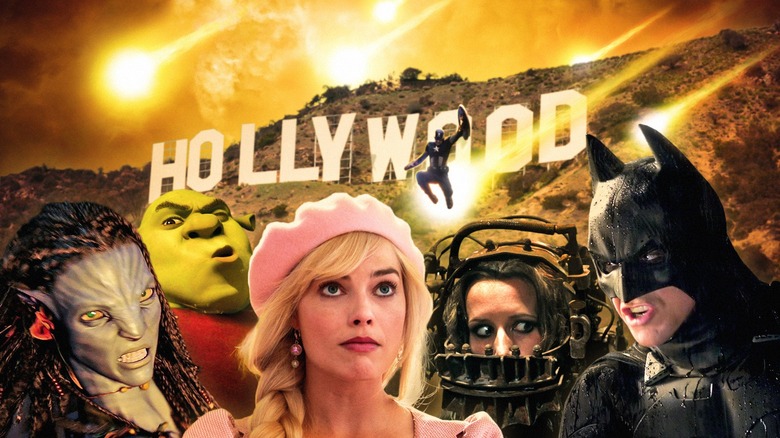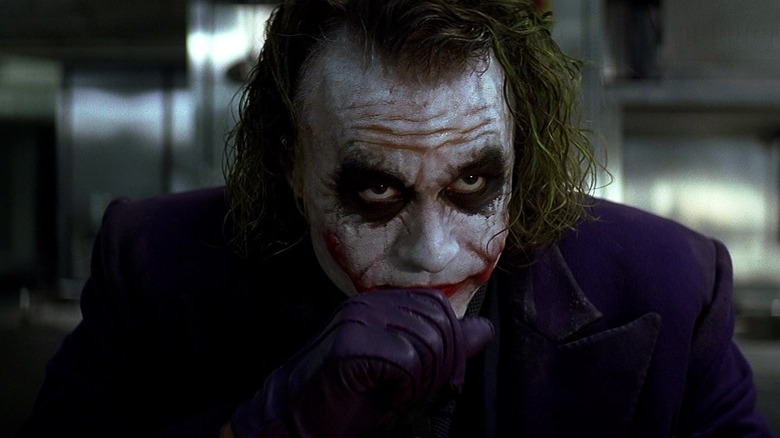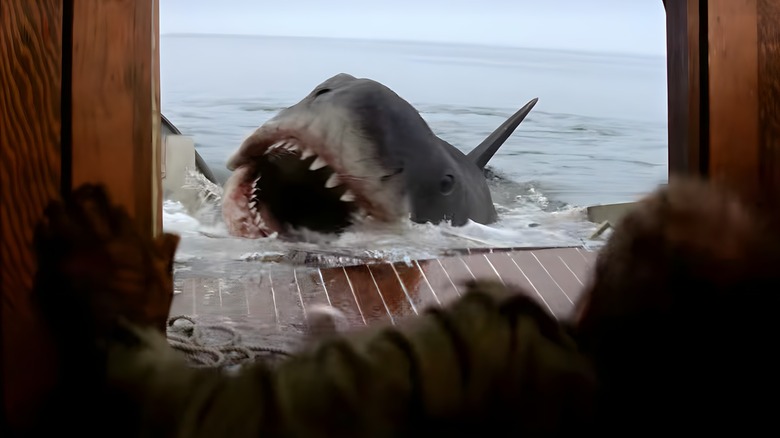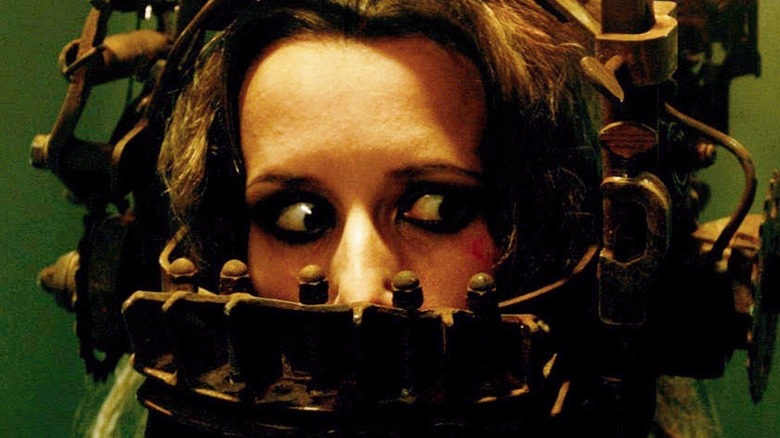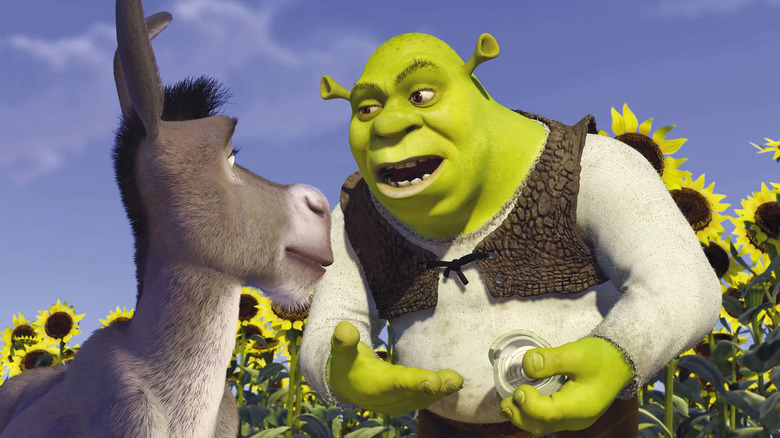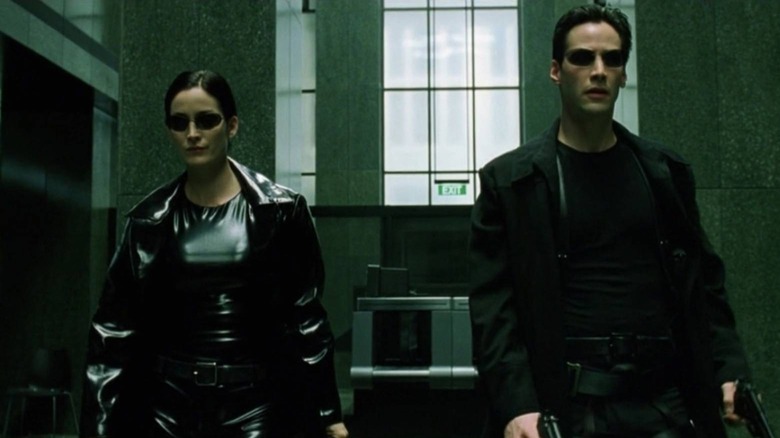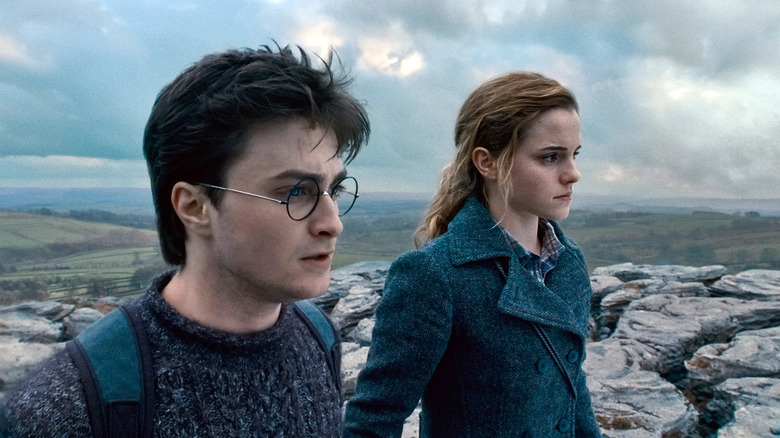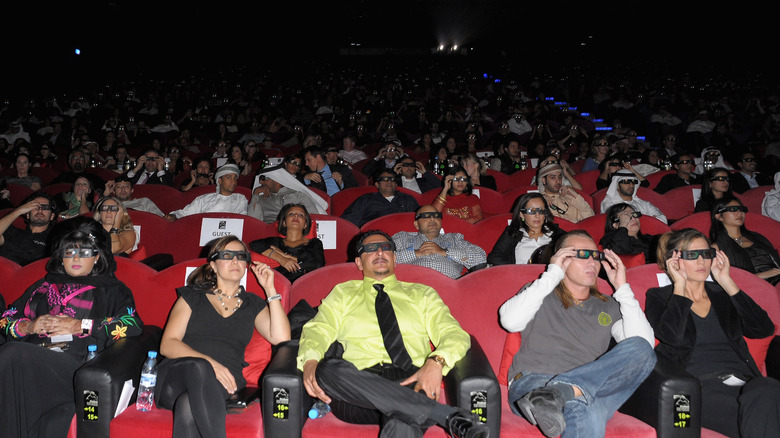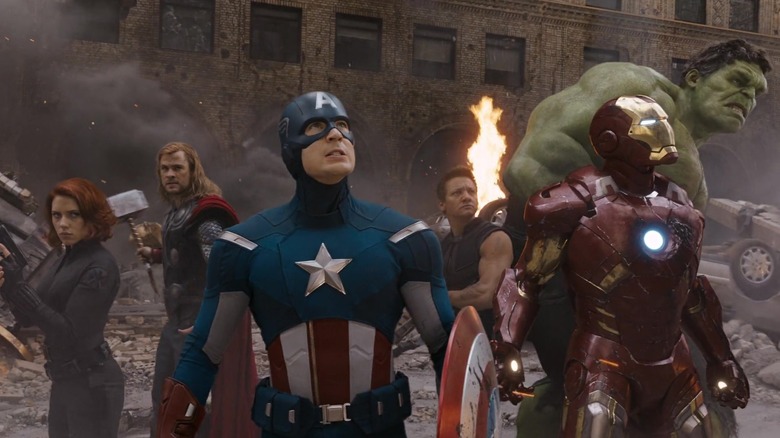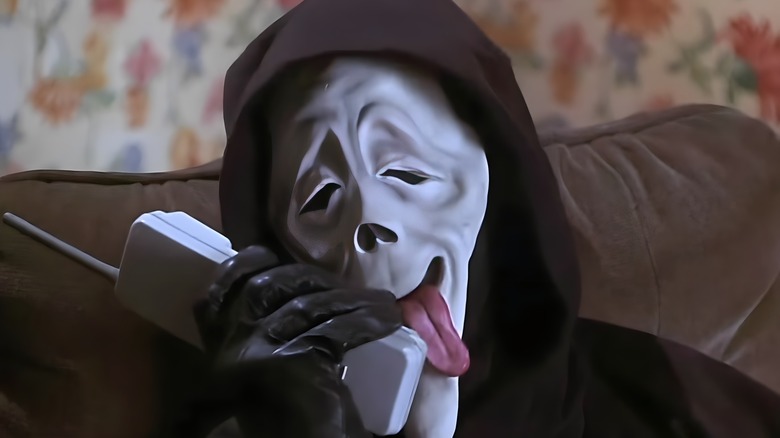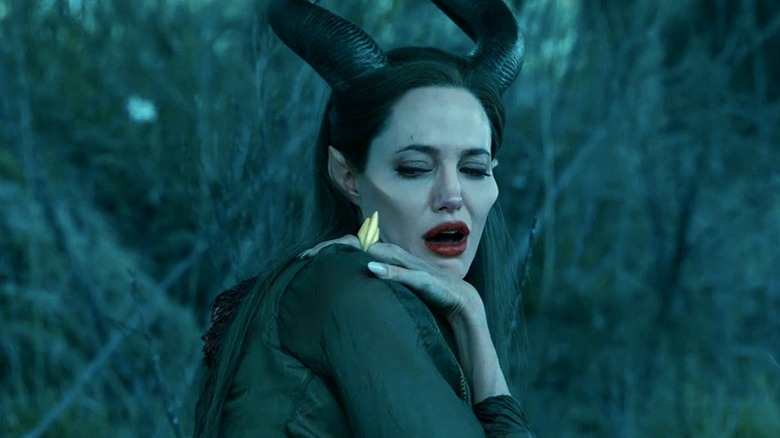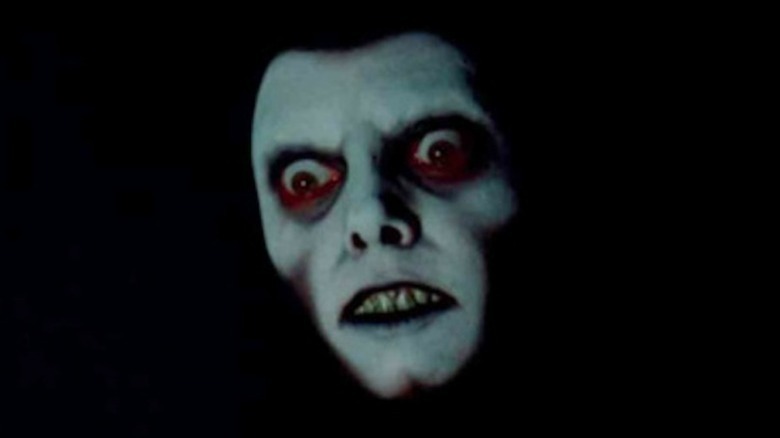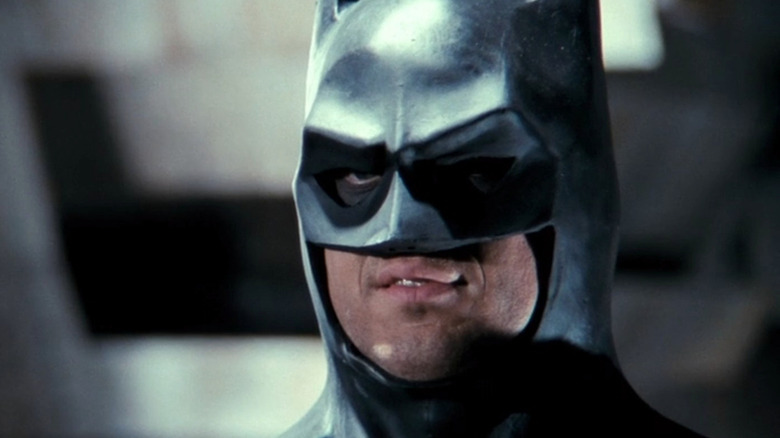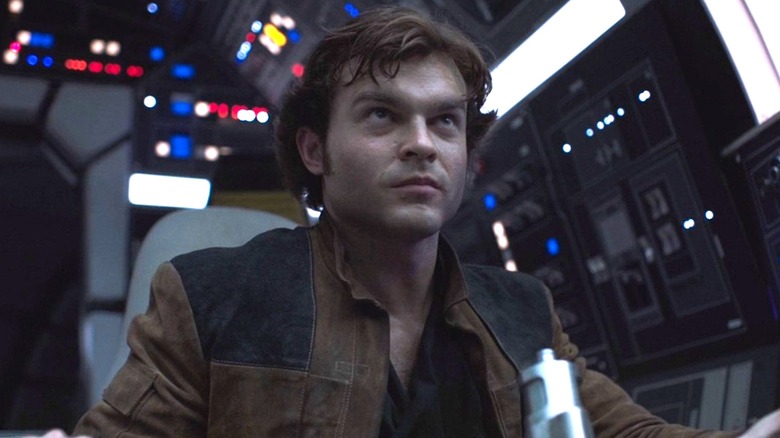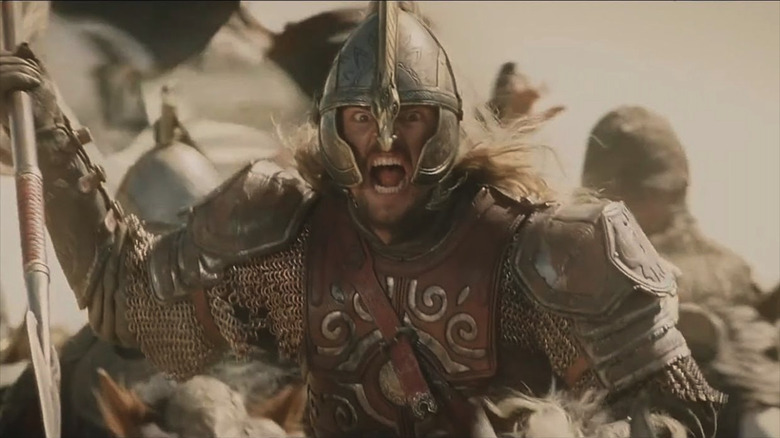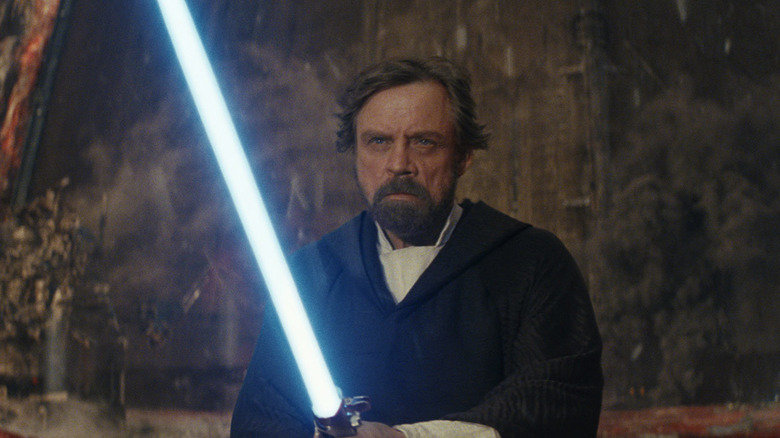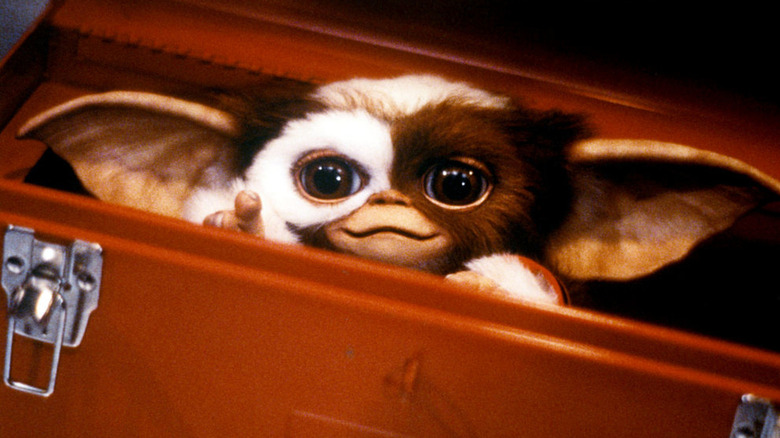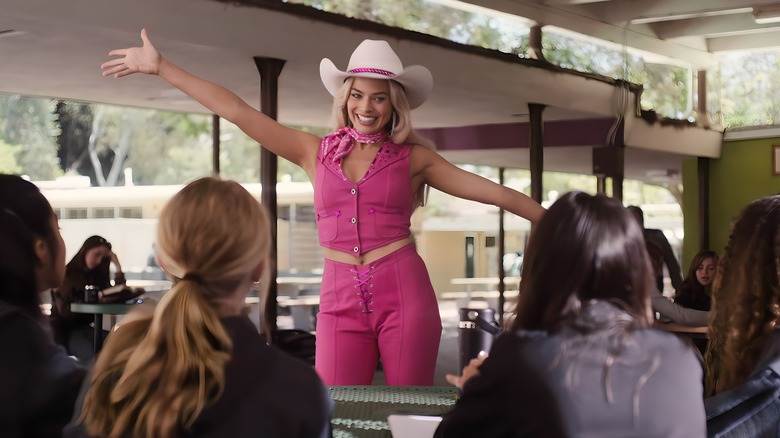Every Wrong Lesson Hollywood Learned From Blockbusters - From Dark Knight To The MCU
If Nicole Kidman's now-iconic AMC ad is to be believed, the movies really are magic. According to her, "Somehow, heartbreak feels good in a place like this."
And she's not wrong. Movies certainly can be magical. There's no denying that, and after movie theaters were shuttered for over a year during the COVID-19 crisis, cinephiles and casual fans alike can finally once again experience the joy of grabbing a bucket of popcorn and checking out the newest releases in theaters ... as the studios who make those movies profit from said joy.
Here's the thing, though. From a studio mindset, that's really what moviemaking is all about, right? Profit. At the end of the day, the entertainment industry is just that: an industry. Especially as the SAG-AFTRA and WGA strikes continue in Hollywood, it has become clear that, when all is said and done, studios just want to make a ton of money, which is why Hollywood executives have, from time to time, learned the completely wrong lessons from some of their biggest successes (or even their failures: remember when Sony couldn't read the room and re-released "Morbius" just so it could bomb at the box office twice?).
From superhero movies turning into joyless grit-fests to giant CGI armies in every fantasy film, here are the times when Hollywood crafted cinematic masterpieces, misunderstood the recipe, and spoiled the broth.
The Dark Knight taught Hollywood to make everything dark, gritty, and realistic
Ready for an understatement? Christopher Nolan's "Dark Knight" trilogy is an important milestone in superhero cinema. The "Oppenheimer" director's take on Batman (Christian Bale) redefined what a big-screen comic book adaptation could be. Yes, Sam Raimi's "Spider-Man" films were mostly phenomenal, and Bryan Singer's "X-Men" franchise blessed the world with Hugh Jackman, but both of those properties, along with many others, predominantly gravitated towards the fantastical surreality of superhero fiction — high-flying action scenes, snarky quips, and impossible villains. With "Batman Begins" and "The Dark Knight," Nolan proved that a story about a man who dresses up like a bat to punch clowns can be realistic, raw, and compelling. And audiences believed him.
Hollywood clocked that success and, instead of recognizing the holy trinity of solid writing, clear direction, and dedicated performances, studio executives tripped over themselves in frenzied delirium to apply the visual aesthetic of Nolan's Gotham onto their own projects like some trendy TikTok filter.
Batman was dark and brooding, so everyone else had to be dark and brooding, too. But quality grit is the result of narrative heft, not an ill-fitting Halloween costume. The CW transplanted Bruce Wayne's backstory and personality into its depiction of Green Arrow for this very reason: before the Arrowverse, Oliver Queen (Stephen Amell) was the kind of guy who thought boxing glove arrows were awesome. Spider-Man got rebooted with more grime, dirt, and a skateboard. The Fantastic Four became dark body horror material. Most tragic of all, Zack Snyder applied a thick veneer of superficial grit to his entire vision for the DCEU, a move so disastrous that Warner Bros. is still hemorrhaging credibility to this day. Though to be fair, Snyder was like that even before "The Dark Knight."
-Cameron Roy Hall
Jaws ignited a wave of lousy killer animal flicks
"Jaws" was one of a kind. When the thriller released in 1975, it became the very first summer blockbuster, and singlehandedly made filling out the middle of the year with notable releases one of Hollywood's most important financial goals. Thanks to "Jaws," a blockbuster precedent was set.
For a time, though, "Jaws" also set off a negative chain reaction. Because Hollywood — as usual — didn't see the success of "Jaws" and understand that audience enthusiasm was because of a mature combination of action, horror, and character drama. Instead, studios rapidly went to work greenlighting a seemingly infinite number of movies about murderous animals.
Let's look back on what "Jaws" really was: shark attacks aside, at its core, the film is a character study of Amityville police chief Martin Brody (Roy Scheider), his battle with local authorities to keep the public safe, and the crew of experts he compiles to finally take the titular shark down. "Jaws" is a movie about people, not the shark. This formula was horribly misunderstood by the wave of copycat films like "Piranha," "Orca" and "Tentacles." The trend didn't just impact deep sea creatures, either, as filmmakers turned to bears ("Grizzly"), dogs ("Cujo"), and other land-based animals to bring people back to theatres.
To be fair to all of Steven Spielberg's quasi-apprentices, not even Universal Pictures itself understood how to replicate the success of "Jaws." Its sequel, "Jaws 2," proved a middling success, and not even a young Dennis Quaid could save "Jaws 3-D." The notably execrable "Jaws: The Revenge" finally put a harpoon through Bruce the Shark and left him to sleep with the fishes.
-Melissa Lemieux
Saw: Focusing on the torture & violence instead of the twisty-turny plot that people actually liked
James Wan's 2004 horror classic "Saw" made $103 million worldwide against a $1.2 million budget. You already know what happened next: Hollywood fell into death trap frenzy, forcing John "Jigsaw" Kramer (Tobin Bell) and his horde of pig-masked disciples to usher in a new fall collection of twistedly educational murder machines almost every year until 2010.
At this point, any random combination of words has a roughly 76 percent chance of accidentally referencing a "Saw" trap. "Shotgun carousel?" "Saw VI," baby. "Knife chair?" Got one right there in "Saw IV." "Wisdom ... teeth ... combination?" Somehow, yes, "Saw 3D" has your back. "Oatmeal frisbee?" Not yet, but don't worry — they're still making these, as well as other horror films with a torture-based angle. Which, unfortunately, is completely missing the point of "Saw."
What's the most excellent trap in the entire franchise — the one that started it all? It's two guys chained up in a room with a corpse, desperately trying to figure out how to escape their increasingly plot-twisting predicament with life and limb intact. That's all it took to get people behind the first "Saw." It's a mystery movie that happens to have some grim deathtraps for extra spice. At some point, the spice took over, and the franchise went on to drench the delicious original dish in ghost pepper sauce, completely smothering the intended flavor.
Yes, the reverse beartrap face thing is cool, but people love "Saw" because it's an unrelenting but extremely clever escape room mystery with a vibe that's far closer to "Knives Out" by way of "Se7en" than the wanton mayhem of the gore-drenched, torture-heavy films it ushered in (remember "Hostel?" Yeah ...).
-Pauli Poisuo
Shrek: Every animated film should be super self-aware and referential
"Shrek" is a seminal film. It's also one of the most heavily memed movies ever made, but let's not let that distract us from its impact on the world of cinema. When "Shrek" debuted in theaters in 2001, Pixar was still in its infancy. Traditional Disney movies reigned supreme in the '90s, and the future of computer-animated films was unclear.
Then came "Shrek," bursting with irreverent comedy, pop culture references, and a licensed soundtrack of retro hits and rock anthems. It was unlike any kids' movie that had come before it, but the tone fit perfectly. After all, "Shrek" was incepted largely as a send-up of Disney and its monopoly on fairy tale flicks. There are even reports that the villainous Lord Farquaad was based on former Disney CEO Michael Eisner. On the merits of its sharp attitude and raunchy style, "Shrek" became a smash hit. But unfortunately, the industry decided to take that idea and run it into the ground.
In the ensuing years, every other animated kids movie followed the same tired formula — a smattering of toilet jokes, a mismatched soundtrack of played-put pop anthems, and a laundry list of parody scenes. DreamWorks was one of the worst culprits of this trend, turning the success of "Shrek" into far worse movies like "Shark Tale" and "Over the Hedge," but other studios also contributed plenty of fodder, from Fox's "Robots" to the present-day reign of Illumination. "Shrek" was imagined as a parody of the genre, which is why its tone works so well. Sadly, it took many years for Hollywood to realize that obnoxious dance scenes don't fit in just any kids' movie.
-Rick Stevenson
The Matrix: Real heroes ALWAYS wear black leather, and only black leather
1999's "The Matrix" changed action cinema. From bullet time, to the film's incorporation of genuine philosophy, many films tried (and failed) to be "The Matrix." You would think an original story like this would convince studio executives to take more ambitious risks, betting big on directors with unique visions. But as usual, it seems like the only thing some producers noticed from "The Matrix" is that it's really cool when characters wear black leather.
Not for nothing, but Neo (Keanu Reeves), Trinity (Carrie-Anne Moss), and other characters do indeed look pretty slick in their getups. The black leather works perfectly with the overall cyberpunk aesthetic of "The Matrix." Unfortunately, it also led to studios being afraid of other sci-fi movies displaying any colors. This could most immediately be seen in the "X-Men" movies, where the fun costumes of the comics are swapped for "Matrix" imitations. You probably remember the "yellow spandex" quip.
It didn't stop there. Clark Kent (Tom Welling) in "Smallville" never truly suits up on screen, and even when he does get a suit, it's black. Then there's the short-lived "Birds of Prey" series of 2002, where Huntress (Ashley Scott) wears a black leather trench coat, as opposed to her purple costume from the comics. Ben Affleck's Daredevil got to wear red, sure, but leather was still the material of choice, and his opponents — Elektra and Bullseye — look like full-on "Matrix" characters. Outside of comics films, the exact same aesthetics can be seen in movies like "Underworld" and "Equilibrium."
Overall, "The Matrix" appears to have spawned a desaturation in hero costumes that's only now starting to be done away with, as evidenced by Wolverine finally getting his yellow suit in "Deadpool 3."
-Mike Bedard
Harry Potter and the Deathly Hallows led to an epidemic of two-part finales
When the final "Harry Potter" adaptation, "Deathly Hallows," was in production, executive producer Lionel Wigram apparently told producer David Heyman and screenwriter David Yates that he thought it would be impossible to bring this lengthy novel to the screen in just one go. As a result, the "Harry Potter" movie franchise's grand finale was split in half. "Harry Potter and the Deathly Hallows — Part 1" was released in November 2010, and "Part 2" arrived in July 2011.
It's doubtful that, at the moment, Wigram and the creative team behind "Harry Potter" knew what they'd started, but from that point on, studios started splitting up final installments of movies like gangbusters. To be fair, splitting up "Deathly Hallows" (a 759-page book) into two installments makes some sense, and director David Yates picked an excellent midpoint for the story (namely, Ralph Fiennes' Voldemort obtaining the powerful and dangerous Elder Wand). Unfortunately, studios then looked at their own young adult and fantasy franchises and followed suit, with seriously diminishing returns. The "Twilight" franchise released "Breaking Dawn" in two parts across 2011 and 2012. "The Hunger Games" did the same thing with "Mockingjay" in 2014 and 2015, and the "Divergent" franchise attempted to pull it off in 2016 and 2017 with "Allegiant," but the first installment performed so poorly that they just canceled the second one outright.
Perhaps the most egregious example is Peter Jackson's "Hobbit" trilogy. That 300-page children's book was adapted into three movies jam-packed with a whole lot of nonsense not found in J.R.R. Tolkien's original book, and to say those movies have aged poorly would be an understatement. Stop doing this, Hollywood. Let the upcoming "Wicked" be the last time.
-Nina Starner
Avatar: People LOVE 3D movies, right?
When "Avatar" dropped in 2009, it took the world by storm. Blue aliens! Thinly-veiled allegories for colonialism! Papyrus fonts! Soon enough, deep sea diver and occasional filmmaker James Cameron had the highest-grossing film of all-time on his hands, a title that would be briefly stolen by "Avengers: Endgame" before claiming the record yet again over a decade after its initial release. Oh, and it also released in 3D, which is the format 81% of audiences chose to see it in theaters.
So, what lesson did Hollywood learn from "Avatar," then? Was it:
- People want inventive and original sci-fi stories.
- People want to look at wet aliens.
- People only want to see movies in 3D.
If you guessed option three, you win, and your prize is vertigo. Following "Avatar," Hollywood started pumping out movies in 3D, convinced the public had moved beyond the paltry constraints of the second dimension.
But the 3D craze was laughably misguided. It turned out that audiences wanted to see "Avatar," not 3D, and the reason so many had watched it in that format was because James Cameron had hyped it up. Cameron was all-in on 3D at the time, having first used it on 2005's deep-sea documentary "Aliens of the Deep" to bring aquatic creatures to life. Moreover, he'd used actual 3D cameras, an expensive endeavor most other movies shied away from. In 2022, even though many major movies still get 3D releases, 3D ticket sales accounted for a paltry 7.7% of box office gross, which drops to an insignificant 3.7% when "Avatar: The Way of Water" is removed from the equation, as reported by CNBC.
-Max Miller
The MCU: Everything should be a cinematic universe
Spin-offs are nothing new and media has spawned other media since before even the dinosaurs (probably), but Marvel Studios revolutionized the concept of conjoined and branching narratives with the creation of the first cinematic universe. Really, all Marvel did was ask, "What if we did comic book movie adaptations the same way that comic books do comic books?" And it worked! That simple idea became the Marvel Cinematic Universe, an ever-growing web of films and TV shows that all take place within the same larger story. The conceit means that audiences can expect, or at least hope, for fun little crossovers at any given point in any given installment. It doesn't make sense for every movie or TV show, but it makes sense for Marvel.
Then DC entered the chat, first with the DC Extended Universe and now with James Gunn's upcoming DC Universe, which is really just the same thing minus Zack Snyder. At its core, DC has been trying to build the same comic book structure that Marvel thrives on. What's astounding is that despite how ... messy, the DCEU has been, it's still been more successful than the numerous other attempted cinematic universes out there.
Audiences value impactful connective tissue and can almost always tell when Hollywood is tacking a disparate story to something bigger with duct tape, leftover twine, and a three-second cameo. Speaking of, remember Universal's Dark Universe? It died on arrival with Tom Cruise's "The Mummy." But planned entries included Johnny Depp as the Invisible Man and Javier Bardem as Frankenstein's Monster.
When the connections matter, when the stories demand it, a cinematic universe makes sense. Otherwise, it fails miserably and you're left with "King Arthur: Legend of the Sword."
-Cameron Roy Hall
Scary Movie: Every genre needs a stale spoof that replicates the original film (but with gross-out jokes)
In 2000, "Scary Movie" rejuvenated the parody film genre by becoming a surprise breakout hit among teenagers. Not since "The Naked Gun" and "Hot Shots!" series had audiences turned out in such high numbers to laugh themselves silly at broad genre parody films. The things that make "Scary Movie" special are numerous, including a knowing fondness for the first "Scream" film, the specific humor brought to the material by the Wayans Brothers, and fun performances by Anna Faris and Regina Hall. Sure, some of the jokes haven't aged very well — such is the nature of comedy — but it still feels distinct among its parody brethren.
Of course, once "Scary Movie" became a surprise hit, Hollywood couldn't resist trying to clone the series in the worst way possible. What lesson did Hollywood learn from the success of this film? Well, studios certainly didn't try to understand the genres they were parodying — they just saw how "Scary Movie" replicated the plot of "Scream," and followed that model in the laziest way. Hence, we ended up with "Date Movie," "Epic Movie," "Meet the Spartans," and "Disaster Movie." Lead by "Scary Movie" co-writers Jason Friedberg and Aaron Seltzer, this slate of film parodies mainly consisted of thinly-written and poorly-connected pop culture references, peppered with incidents of bathroom humor, instead of knowing nods to a particular movie or genre. The parody train didn't stop until these films began to see diminishing returns at the box office.
In the wake of such releases, the parody genre sank at the box office, and has only recently begun to get back on its feet with films like "Weird: the Al Yankovic Story."
-Melissa Lemieux
Wicked paved the way for Maleficent, Joker, Cruella, and all the other villains who aren't villains anymore
When "Wicked" hit Broadway in 2003, it was a gamechanger. And Hollywood reacted in (as always) the wrong way. Because "Wicked" was both phenomenal, and for years, a phenomenon, studios decided to cash-in by giving every famous villain a tragic backstory.
Unfortunately, it doesn't always work. 2014's "Maleficent" reduced its powerful, terrifying title character to a classic Mad Woman in the Attic — one so wounded and emotionally damaged by a man that she goes off the rails (and is saved by her latent maternal instinct — gag). Then, "Cruella" transformed a sociopath into a Cool Rebel, asking us to forget that she later skins and wears dogs for a living (or else decide it's fine, since those dogs...*checks notes*... pushed her mother off a cliff? Got it).
2007's "Hannibal Rising," 2014's "Dracula: Untold," 2018's "Venom," 2019's "Joker," 2020's "Ratched," and whatever the hell 2022's "Morbius" was (and whatever the hell the inevitable movie about Ursula will be...) are but a few of examples of this rampant, Sad Origin, villain turned "antihero" cash grab. Some of these works aren't terrible, but their increasing ubiquity should alarm us.
It's not just that they undo the themes of the overarching narrative, that they're the epitome of "telling, not showing," or that they've made us collectively forget the actual definition and function of an antihero (versus an antagonist) in the same way we've all forgotten what "ironic" and "literally" mean. It's that the stories we tell ourselves do need villains. Stories help us navigate the world around us, and that world is filled with arbitrary, inexplicable, and yes, unjustifiable cruelty. These origin stories, though, don't teach us empathy. All they do is suggest that everything bad can be explained away by a reason that makes perfect sense. And sometimes? It really, really can't.
-Kim Bell
The Exorcist inspired numerous cheap, exploitative 'true stories' about other exorcisms
There aren't many horror fans out there who don't love "The Exorcist," William Friedkin's game-changing chiller about a young girl who gets possessed by a demonic entity. It's been almost 50 years since the film's release, and it's still widely regarded as one of the scariest movies ever made. The influence of Friedkin's demonic thriller is still being felt to this day, as evidenced by the upcoming sequel, "The Exorcist: Believer."
That's arguably a bad thing.
The success of "The Exorcist" spawned countless rip-offs, many of which are exploitation flicks that leave a lot to be desired. The 1970s produced a slew of schlocky low-budget copycats — "Abby," "Seytan," "The Manitou," etc. — that ultimately created a trend that still exists to this day. Unfortunately, the movie industry has a habit of milking trends until they're lifeless, and filmmakers can't resist capitalizing on the ever-present popularity of movies about exorcisms. Unlike Friedkin's movie, though, the majority of exorcism movies are boring slogs that are happy to stick to the same old tropes without bringing any new ideas to the table.
Furthermore, "The Exorcist" undoubtedly added to the world's fascination with "true story" horror movies. William Blatty's original novel was inspired by an exorcism case from 1949, which details the story of a 13-year-old Cottage City, Maryland resident who supposedly became possessed after developing an interest in Ouija boards. How many exorcism movies have we seen since then that claim to be based on actual events? The problem, though, is that they're happy to delve into the sensationalist supernatural elements instead of addressing the mental health struggles that, in real life, cause people to believe that they're being possessed. As such, these movies just feel exploitative, as well as generic. It's time for exorcism movies to become more original and entertaining instead.
-Kieran Fisher
Batman '89 tricked Hollywood into thinking people wanted pulp heroes instead of superheroes
Superhero movies are ubiquitous in the movie industry these days, with a new one going to theaters seemingly every month now. That's a fairly recent phenomenon. Hollywood was scared of superheroes for a long, long time, even after one particular 1989 film did incredible business.
It's hard to understate how significant "Batman" was. Before Burton's film, most non-comics people associated the character with the campy 1960s series. Amazingly, Hollywood's lesson from this wasn't to look more into comics characters — there was no new Superman movie, no Wonder Woman flick, no Spider-Man or Hulk — but instead, to copy Burton's pulpy aesthetic.
More specifically, studios responded to the success of "Batman" by greenlighting films about pulp heroes from the 1930s and 1940s, with a wave of adaptations like "The Rocketeer," "The Shadow," and "The Phantom." Even Sam Raimi's "Darkman" counts, as it only exists because he couldn't get the rights to "The Shadow."
The problem here isn't that these pulp adaptations were bad. It's actually neat that these then-obscure heroes got big Hollywood movies, which have developed cult followings. It's just funny that Hollywood so clearly misunderstood what people actually wanted at the time. For example, "The Rocketeer" only grossed $46 million at the box office worldwide against a $35 million budget. "The Phantom" fared even worse, grossing $23.5 million at the box office against a budget of $45 million. Audiences didn't flock to "Batman" because he originated in the 1930s. It was a fresh reinvention of a well-known character from a proven director with a distinct style.
Of course, it's hard to knock producers for this one when we did get "The Rocketeer." A loss for them, but a win for us.
-Mike Bedard
Solo: Weird CGI likenesses are better than recasts
Modern "Star Wars" has seen a fair few missteps, but the failure of "Solo" particularly stings because of how it has caused Hollywood to internalize a very erroneous lesson. According to a Vanity Fair interview with Lucasfilm president Kathleen Kennedy, "Solo" bombed not because of problems with franchise overextension, advertising, or narrative quality, but because it featured a new actor (Alden Ehrenreich) as Han Solo. "Now it does seem so abundantly clear that we can't do that," she explained.
"Solo" certainly has problems, but the basic idea of featuring a new actor as its titular character is not one of them. Laying the blame at the feet of a necessary recast (unless viewers wanted to see a 70-something-year-old Harrison Ford pretend to be in his early 20s) feels like Lucasfilm missing the point of what went wrong here, and it unfortunately seems like the movie has caused "Star Wars" to become more averse than ever to recasting its legendary heroes — even when the time is right.
Nowadays, spotty de-aging technology and lifeless yet recognizable likenesses are the name of the "Star Wars" game. When a youthful Luke Skywalker pops up on "The Mandalorian," it's as a wooden CGI recreation of Mark Hamill. The reticence to recast has also spread elsewhere, as the expiring actor contracts of the MCU have led that franchise to bid farewell to some of its biggest superheroes, even if those characters have more stories worth telling. For pop culture characters like these, they're bigger than any singular actor. Hollywood must remember that recasting is nothing to be afraid of.
-Ethan Zack
Lord of the Rings: Every fantasy climax must have a colossal battle scene, even if it's Alice in Wonderland
Peter Jackson's "The Lord of the Rings" trilogy ushered in the modern pop culture obsession with cinematic fantasy adaptations. While there's a lot to love about Jackson's tri-part epic, there's no doubt that the two-part battle sequence in "The Return of the King" is a top attraction. The Battle of the Pelennor Fields — and particularly the charge of the Rohirrim with the rising sun to their backs — is one of the greatest climactic military moments in all of cinematic history.
Aragorn's subsequent speech before the Black Gate of Mordor and the last stand against Sauron's overwhelming forces is also deeply moving ...so much so that Hollywood decided it needed to be the defining element for any and every fantasy film in existence. "The Lion, The Witch, and the Wardrobe" spent way too much time on its final battle (even though it's a footnote in the source material). Later seasons of "Game of Thrones" are overrun with oversized battles. "The Wheel of Time" ended with violence, and Season 2 promises to build to a similar climax. Heck, even the live-action "Alice in Wonderland" had to wind its way down to a final battle.
Do epic last stands and heroic charges have their place in fantasy? Yes. Can they make for a super emotional thrill ride that transcends reality? You betcha. But come on, Hollywood. Colossal battle scenes with multiple armies are not a prerequisite for a good fantasy film. On the contrary, there are plenty of times when shoe-horning the action in at the last second as a necessary item on a checklist can detract from an otherwise awesome film.
-Jaron Pak
The Force Awakens and The Last Jedi: Fans want nostalgia, not new ideas
There was a brief time from 2015 to 2017 when it was truly great to be a "Star Wars" fan. Disney kicked off its new trilogy with "The Force Awakens" in 2015, and for the most part, everyone liked it. The hype leading up to the film's premiere was absurd, and while some criticized it for being too similar to "A New Hope," most negative sentiments were pretty mild. "Rogue One" followed in 2016 to thunderous applause, and the return of Luke Skywalker in "The Last Jedi" had the whole fandom excited. And then the movie came out, and ... some people adored it, while some declared it the death of the franchise.
Since then, "Star Wars" has been a fascinating mess — the biggest franchise of all time suddenly terrified of upsetting a shattered fan base. And somehow, the lesson that both Disney and other studios seemed to learn from the whole thing was that fans only want nostalgia, not new ideas. Love it or hate it, Rian Johnson's voyage into the galaxy far, far away was something different. It answered the main critique of "The Force Awakens" by embracing a new spin on "Star Wars." But the movie proved so divisive that Disney has been terrified of taking similar risks ever since.
The safe bet nostalgia strategy was employed in other movies of the era with middling results, like "Jurassic World Dominion," which brought back the stars of the original "Jurassic Park," and "The Flash," which centered Michael Keaton's Batman instead of telling a new story. Nostalgia might sell, but its theatrical appeal fizzles fast.
-Rick Stevenson
Gremlins: a clever parody that started a wave of one-note tiny monster movies
Joe Dante's "Gremlins" wants to be the perfect horror-comedy, and spends every single second of its runtime working toward that exact result. It parodies both horror and disaster genres with gusto, while managing to be a pretty good representative of each. It successfully weaves together heartwarming cuteness (Gizmo), sweet B-movie mayhem (the gremlins' assault on the town), and tales and visions of visceral horror (the chimney story) into a deceptively complex package with a profound cultural impact.
Critics and audiences loved "Gremlins." Roger Ebert called it "A meditation on the myths in our movies: Christmas, families, monsters, retail stores, movies, boogeymen." It was a large part of why the MPAA created the PG-13 rating. And Hollywood took one look at its $153-million box office and started furiously greenlighting every single script that looked like you could shove a tiny rubber monster in the third act.
You know what happened next. Waves upon waves of "Critters," "Ghoulies," "Troll," "Hobgoblins," "Munchies," and what have you have been unleashed upon the by now all-too-wary world since 1984. Some of them have been decent, others ... well, let's just say less so. However, they all have one thing in common: they entirely missed every single thing about "Gremlins" that wasn't "small creatures terrorize people."
The effect of his movie clearly wasn't lost on Dante. When he made the inevitable sequel in 1990, "Gremlins 2: The New Batch" was an over-the-top screwball parody of the genre the original "Gremlins" inadvertently helped inspire — to the point that it featured superpowered gremlins and Christopher Lee playing an evil scientist called Dr. Cushing Catheter. Hey, if you have to dunk on your own work, you might as well go all in.
- Pauli Poisuo
Barbie is already teaching studios the worst possible lesson
There's box office success, and then there's the incredible feat "Barbie" pulled off in the summer of 2023 when it broke one box office record after another. The film, which is helmed by indie darling and Oscar nominee Greta Gerwig but also focuses on one of the most recognizable and iconic capitalist properties in American history, is a total contradiction ... which is what makes the movie so excellent. Gerwig, her co-writer Noah Baumbach, and star and executive producer Margot Robbie managed to create an irreverent, subversive, and deeply emotional film about what it means to both be a woman and what it means to represent the very idea of a woman. This is not a thing every writer-director can do when tasked with making a movie about a toy.
Unfortunately for the world, it's already clear that the lesson Mattel took from this experience was decidedly not that women want more movies made for and about them by visionary directors. The lesson they took, instead, was that people want more movies about toys. Right.
If you liked "Barbie," prepare to be disappointed by any one of the following options: J.J. Abrams' allegedly "gritty" movie about "Hot Wheels," Lena Dunham's "Polly Pocket" movie starring Lily Collins, Daniel Kaluuya's reportedly dark take on "Barney," a live-action "Uno" movie (?!), and a horror movie based around Magic 8 Balls from a writer who worked on "Cocaine Bear." The reason people love "Barbie" is because it's a good, unique movie, not because they're dying for Mattel's cinematic universe, but as this very article proves, Hollywood always learns the wrong lesson — so it's only natural that they're about to repeat this cycle of sadness all over again.
-Nina Starner
